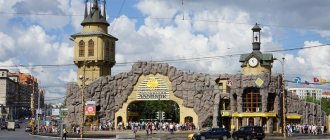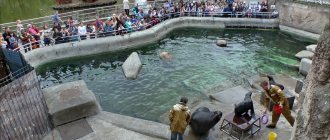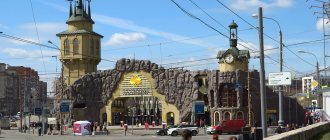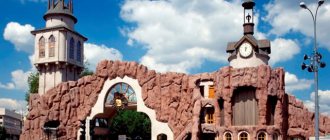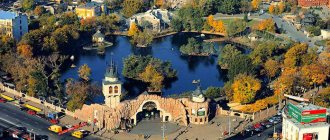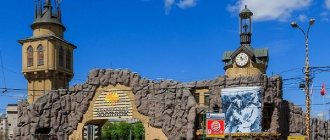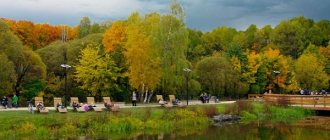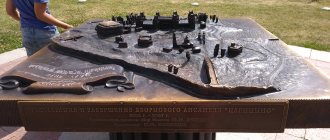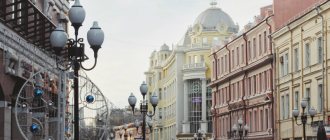How many animals are there in the Moscow Zoo?
The zoo houses more than 8 thousand animals and breeds rare and endangered species. For the 150th anniversary, in 2014, a tropical plant greenhouse was opened, which contains more than 100 species of exotic fauna.
The animals of the Moscow Zoo are mammals, birds, fish, amphibians and invertebrates. Some species are kept in a nursery near Volokolamsk. The Zoo is constantly updating its nurseries and making exchanges with other zoo nurseries around the world, so the number of animals at the Moscow Zoo is constantly changing.
Predators
The predatory animals of the Moscow Zoo are kept in specially equipped enclosures that maximally imitate their natural habitat. Visitors can freely observe the daily life of animals. Photos of Moscow Zoo animals with names, detailed descriptions, habitat and nickname are posted on each enclosure.
Gray wolves - male and female - have lived since 2013 and are kept in an enclosure, which is located opposite the Skating Circle.
The Asian jackal (female) has been resident since 2015.
Wolverine - a male and a female - live separately in an enclosure in a new territory.
Raccoon dog - kept on the old territory in a decorative pen.
Jaguarundi (cat family) - a couple lives in the old territory.
Steppe cat (Indian subspecies) - two females live in a separate enclosure on the territory of the zoo, and at night they are allowed to walk in the closed premises of the nurseries.
Polar wolf - male and female.
Common otter - the animals live and breed in a triple pool.
Puma (cat family, mammals of America) - a large male can be seen in the cat row.
Striped skunk - in winter it lives next to tapir, and in summer with giraffe and donkeys (prianal glands removed).
Himalayan bear - kept in a bear enclosure made of logs.
Meerkats have been living in the zoo since 2009, in the “African Ungulates” pavilion.
Red lynx - the female has been living next to the European lynx for more than 20 years.
Striped hyena is endangered, the male is in the breeding area.
The common arctic fox is located on the corner of the “Cat Row” (old territory), between the puma and the red wolves.
Red fox - several individuals live on the old territory in the enclosure, next to the fence and the “Japanese Corner”.
Pallas' cats are on display between spectacled bears and tropical cats.
Kinkajou is a species on the verge of extinction; the male is in the enclosure of the “Night World” exhibition.
Raccoon raccoon - animals live together with raccoon dogs and representatives of the canid family in the old territory, behind the marine mammal complex.
European lynx - kept in the “Cat Row” on the old territory, spends most of the time on the balconies.
The Far Eastern leopard is a species on the verge of extinction; representatives can be seen in the “Cat Row” in the old territory.
Brown bear - lives on the “Island of Animals” (new territory).
Story
The place where the zoo is located today has long been called Presnensky Ponds. In the river valley Presnya had many gardens and hay meadows, and Muscovites loved to stroll here. The zoo was created by employees of Moscow University with funds provided by wealthy residents of the city and members of the royal family.
At the time of discovery, one and a half hundred wild animals, about the same number of domestic animals and several species of reptiles lived in enclosures and cages. Most of them represented the fauna of the Russian Empire. In the new Moscow zoo one could see wolves, bears, moose, hares, foxes, squirrels and hedgehogs. Among the exotic animals kept in Moscow were a rhinoceros, a leopard, a crocodile, a jaguar and two lions.
View of the large pond
The new zoo was not only a public entertainment place, but also played the role of a large scientific center. Its employees successfully bred new domestic breeds and acclimatized purebred animals brought from different parts of the world.
Almost every year the zoo sent expeditions to exotic countries, and they were engaged in capturing wild animals. In addition, the collection of animals was regularly replenished with gifts from the imperial family.
Together with the whole country, the zoo survived the revolutions and wars of the 20th century. But in difficult times, experienced biologists and enthusiasts were always next to the animals, whose dedication and work helped preserve and increase the unique collections of animals and birds.
Flamingo
Species listed in the Red Book
Fennec fox (predator) – male and female live in the “Bird House” on the old territory.
Nosuha (predator) - raised in a separate division of the zoo.
Kharza (predator) - at the zoo can be seen between otters and snowy owls in the new territory.
Sable (predator) – the female of this species can be seen at the “Animals of Russia” exhibition.
Small red panda (predator) – kept on the old territory in the “Cats of the Tropics” pavilion.
A male and female sloth bear (predator) live in the Spectacled Bears complex on the old territory.
Red wolf (predator) – enclosures next to Arctic fox and coyote.
Snow leopard, ibis (predator) – two males and a female live in the “Cat Row”.
Indian lion (predator) – in the interior of the “King of Beasts”.
Hyena dog (predator) - the female is kept individually, and can only be seen in the summer on the old territory, in the wolf enclosure.
Cheetah – lives next to the “Giraffe House” on the old territory.
Bengal tiger (color – white, Predator) – there is a single female in the “Cats of the Tropics” pavilion.
White bear (predator) - three adult individuals live in enclosures by the pool.
Amur tiger (predator) – the female lives on the “Island of Animals”.
Tapir (odd-toed ungulates) – the zoo contains a female who is over 25 years old.
Przewalski's horse (odd-toed ungulates) - two females.
David's deer (artiodactyl) - two females and a male live in the new territory.
Muskox (artiodactyl) – there are 4 males, 2 females with calves on the territory of the zoo.
Black antelope (artiodactyl) – several individuals are kept in the new territory in the exhibition “Ungulates of Africa”.
Sichuan takin (even-toed ungulate) - male and two females.
Reticulated giraffe (artiodactyl) – a male specimen is kept in the “Ungulates of Africa” pavilion on the new territory.
Dagestan tour (artiodactyl) – you can admire the animals in the complex called “Turya Gorka”. Two young males live here.
Guanaco (artiodactyls) - the female is kept in the northern enclosure with camels.
Horned goat (artiodactyl) - animals live in a small herd in artificial rocks.
Vicuna (artiodactyls) - the species is presented on the old territory of the zoo in the “South America” exhibition.
White-tailed Wildebeest (artiodactyls) - a small group near the Giraffe House.
Dwarf flying cuscus (marsupials) – Night World pavilion.
Speckled marten (marsupials) – exhibition “Night World”.
Bristle-tailed kangaroo (marsupials) - individuals live in interior spaces.
Long-eared hedgehog (insectivore) – Night World pavilion.
Monkey Diana (primates) – a female and a male live in the enclosures of the “Monkeys” pavilion.
Black-handed gibbon (primates) – Monkeys pavilion.
Slow lorises (primates) – “Night World” exhibition and “Monkeys” pavilion.
Thick-tailed galago (primates) – Monkeys pavilion.
Senegalese galago (primates) – Monkeys pavilion.
Orangutan (primates) – Monkeys pavilion.
Pygmy loris (primates) - live in pairs in wooden enclosures.
Lion-tailed macaque (primates) - the group lives in the Monkeys pavilion.
Capuchin crybaby (primates) – “Monkeys” pavilion.
Lowland gorilla (primates) – Monkeys pavilion.
Eastern colobus (primates) – Primates pavilion.
Common beaver (rodents) – Night World pavilion, you can see them on the street next to the wolf enclosure.
Taganskaya Mara (rodents) – “House of Birds”.
Chinchilla (rodent) – Night World pavilion.
Bruce's hyrax (hyraxes) - four males in the Elephant Pavilion, old territory.
Northern fur seal (pinnipeds) – representatives live in the old territory, in the enclosure of the “Pinnipeds” complex.
Marsupials
Pygmy flying squirrel.
Bennett's wallaby - kept in a special glass enclosure.
Large striped couscous – exhibition “Night World”.
The brownie opossum is a solitary animal kept in separate cages.
Partial teeth:
Ball-shaped armadillo - the species is protected in Brazil, the Night World pavilion.
The bristly armadillo is a group of “traveling animals”. They live in an enclosure with sloths.
Two-toed sloth - a male and two females live in an enclosure on the crossing bridge.
Short-legged Elephant Jumper – Night World placement.
Insectivores and other species
White-breasted hedgehog – Night World pavilion.
An ordinary hedgehog - the Night World pavilion.
Chiroptera:
- Nile fruit bat – “Night world”.
- Spectacled leaf-nosed bat – exhibition “Night World”.
Rodents:
- Northern palm squirrel.
- Steppe marmot.
- Cape Strider.
- Northern thin-tailed rat.
- Spiny mouse.
- Degu.
- Sonya.
- Capybara.
- Swamp beaver nutria.
- Acacia rat.
- Letyaga et al.
Among the lagomorphs – the white hare, which can be seen in the exhibition “Animal World of Russia”.
Pinnipeds - a gray seal is in an open pool on the old territory.
The list of animals of the Moscow Zoo and their places of detention may not be complete and is current for 2021. As already mentioned, the situation with pets may change.
What to see nearby
- The Catholic Cathedral is a functioning temple where sacred music concerts are held. Entrance to concerts is paid. At other times, admission is open to everyone free of charge. The cathedral is located 0.5 km from the Moscow Zoo.
- The culinary studio conducts master classes. Visitors, together with professional chefs and culinary stars, prepare dishes from different countries. On the studio’s website you can view the schedule and choose a master class that interests you.
- The Patriarch's Ponds are located a kilometer from the zoo. A very pleasant place for a relaxing holiday. This place has always been associated with mysticism. They say that in the distant past, pagans held sacrifices here, and other legends about evil spirits are associated with this place. But, no matter what happened in the past, today it is a beautiful square; ducks and swans live in the pond, which you can feed.
For a century and a half, the zoo has been delighting its visitors, introducing them to the amazing world of wildlife. It’s especially nice that the animals look well-groomed and well-fed. The park area is clean and well-maintained. Educational programs and excursions will help you better understand the behavioral characteristics of various animals. If you are planning a trip to the capital of Russia, include a visit to the zoo in your program - a pleasant experience is guaranteed .
What animals are there in the Moscow Zoo, besides mammals?
In addition to mammals, the zoo houses more than 70 species of birds. In the central part there is an amazingly beautiful lake with red flamingos.
At the crossing there is a large pond with many varieties of waterfowl such as ducks, swan, Nile goose, bar-headed goose, swans. Several rare species listed in the Red Book are kept in the Bird House pavilion. These are the following species: scarlet or red ibis, Kaffir horned raven, Humboldt penguin and others.
The terrarium contains:
- Paraguayan reptile;
- anaconda;
- common boa constrictor;
- Madagascar boa constrictor;
- tiger python;
- reticulated python;
- black caiman;
- iguana;
- crocodile caiman;
- smooth-faced caiman;
- blunt-nosed crocodile;
- Chinese horned iguana;
- Mississippi alligator, etc.
Amphibians:
- Mongolian toad.
- Common or gray toad.
- Green toad.
In the Exotarium you can see African Achatina, migratory locust, peacock eye, house cricket, pig butterfly, four-colored sea anemone and other interesting insects.
Information for visitors
You can visit the zoo any day except Monday, from 9:00 to 18:00. Children under 17 years of age, students, full-time university students, military personnel, pensioners and members of large families are admitted here free of charge. Please note that the entrance closes one hour before closing. All privileged categories of the population must receive free tickets at the box office and present them at the entrance.
The cost of visiting the zoo for adults is 500 rubles (2018). The exotarium, exhibitions and pony rides are paid separately.
Gorillas
